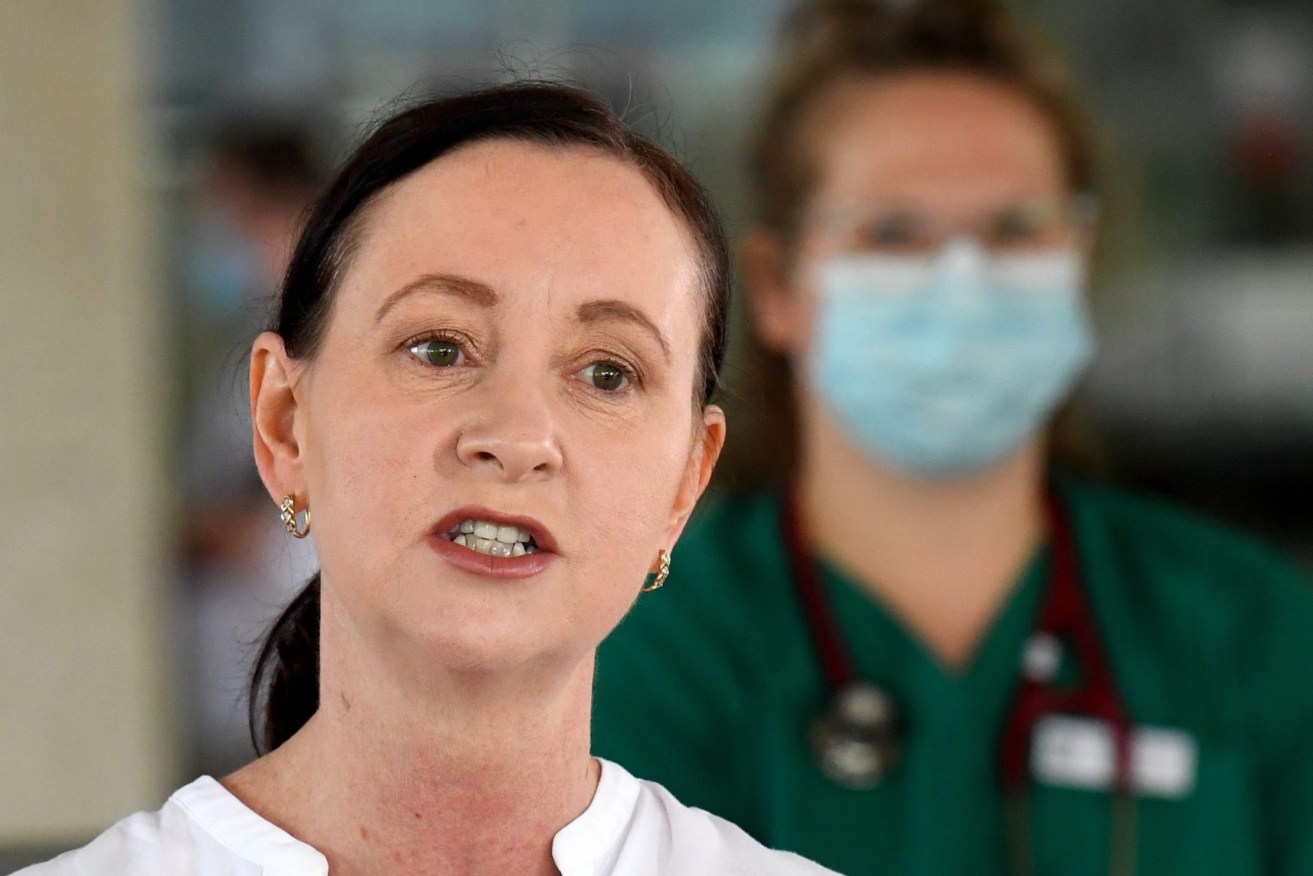Death toll hits all-time high, but modelling predicted much worse
Queensland has recorded its deadliest day yet of the Covid-19 pandemic, with 18 deaths, including an unvaccinated person in their 30s.

Queensland Health Minister Yvette D'Ath. (AAP Image/Darren England)
News of the deaths comes two years to the day that the State recorded its first Covid case, and as the State notched up another 9974 cases.
It was also Australia’s deadliest day with 93 fatalities confirmed on Friday. The previous one-day high for COVID-19 deaths was set just last week when 88 deaths were recorded.
While COVID-19 cases are plateauing, the country’s chief nursing and midwifery officer, Professor Alison McMillan, said death rates were set to remain high for some time.
“As we have seen during the two years of the pandemic, the number of deaths associated with those cases stay higher for a longer period,” she told reporters in Canberra on Friday.
“There is a delay in the number of deaths, sadly, we have seen quite a number of deaths.”
But the tragic toll is much lower than the worst case scenario which authorities had planned for. NSW recorded 70 deaths overnight while another 39 deaths were recorded in Victoria.
Premier Annastacia Palaszczuk released State Government modelling which revealed that health authorities were anticipating that in a worst case scenario 5000 people could be hospitalised as the Omicron variant reached its peak.
The most likely scenario, according to the modelling, was more than 3000 in hospital. Palaszczuk said the modelling at the time was “quite frightening”.
Instead, with the Gold Coast having already passed its peak and the Greater Brisbane and south east reaching a peak within days, there are 818 people in hospital with the virus, down from 829 on Thursday.
Under the worst case scenario, there were predictions that 500 intensive care beds would be needed. On Friday ther were 54 people in intensive care, slightly up from 48 the previous day.
But the State’s Chief Health Officer, Dr John Gerrard, warned that despite the good news, it was not time to celebrate just yet.
He said that of the 18 deaths reported Friday, one was an unvaccinated person in their 30s, four people in their 60s, four in their 70s, seven in their 80s and two in their 90s.
Six of the lives lost were unvaccinated, nine were double vaccinated and three had received the third booster shot.
“Today is two years since I saw Queensland’s first Covid-19 case on the Gold Coast. Never at that time did we expect to see such low numbers of patients in our hospitals or intensive care … this is quite extraordinary and it is of course all due to vaccination,” Gerrard said.
He said the figures were lower again than authorities predicted just 18 days ago.
The State’s high vaccination rates coupled with behavioural changes made by the public as the Omicron wave reached its peak were the reason, he said.
But he added a note of caution.
“This is definitely not the time to be going out and celebrating. Please do not do that,” Dr Gerrard said. “This is not over, we are at the peak. Don’t go out and celebrate yet but the news at this stage is good.”
Metropolitan Brisbane is at or reaching its peak at the moment.
Gerrard said the next unknown in regard to the virus was what could happen as we head into winter, given the virus appears to thrive in winter conditions.
Health Minister Yvette D’Ath reiterated the importance of vaccination in keeping people out of hospital and death rates down.
She said the unvaccinated made up eight per cent of the population but 20-30 per cent of the deaths.
So far, 1.3 million Queenslanders have received their booster shot and 30 per cent of five to 11-year-olds had received their first dose of the vaccine.
But with schools set to resume on February 7, authorities are calling for all school aged children to get vaccinated. A Back to School Blitz is planned for the weekend where schools across the State will be opened as vaccination hubs.
The Premier said that the number of health workers furloughed due to testing positive to the virus or being a close contact was also now falling, in good news for the health system.
“It doesn’t mean, by any means, that we are out of the pandemic but it does mean hopefully we will see the return of our supply chains,” Palaszczuk said.












